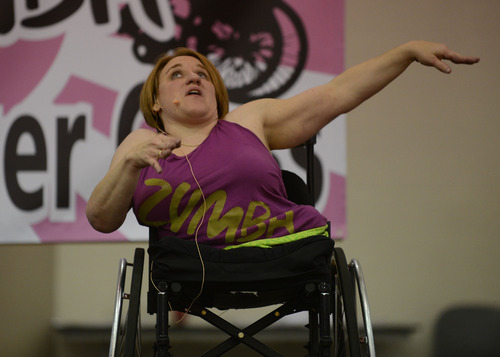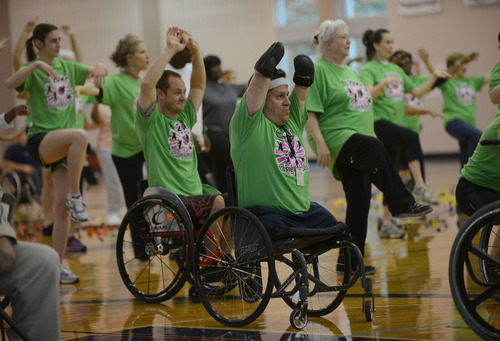Blog post by NCHPAD
February should be a time for implementation of your New Year’s focused goals and strategies, but are these tactics reaching out to the often most untapped market in the fitness industry— people with disabilities?

Pictured above: JoAnne Fluke, Zumba® Instructor
Over 54 million Americans have a disability or activity limitation. They represent a growing niche market for the fitness industry, but why? Adults with disabilities have a 66% higher rate of obesity compared to those without disabilities; additionally, only 27.3% of people with disabilities met the Physical Activity Guidelines compared to 46.9% of the general population. As a result, people with disabilities are more likely to be sedentary and experience substantial barriers to physical activity participation compared to the general population. Along with the health disparities seen in people with disabilities, this group has a vast spending power according to the U.S. Department of Labor, making them a large and growing market.
As fitness and health professionals, we all recognize the benefits of active opportunities for the general population, but shouldn’t these opportunities be made available to everyone? Any effort to address the needs of people with disabilities is an opportunity to market and expand your program to a rising population. Going beyond getting in the door and other ADA mandates, fitness organizations can benefit from treating inclusion as a value and recognizing differences among inviduals while still empowering those individuals to become active and contributory members. Here are some tips for creating inclusive fitness environments:
- Use NCHPAD’s Before & After Fitness Center Makeover to assess environmental barriers
- Utilize principles of Universal Design to go above and beyond minimum law requirements
- Provide equipment that offers features for users of varying abilities
- Stay up to speed on Disability Awareness
- Separate from the pack by improving knowledge and quality of service to people with disabilities through the ACSM/NCHPAD Certified Inclusive Fitness Trainer (CIFT) specialty certification
Another key component to establishing inclusive fitness opportunities is marketing. Maybe you already offer inclusive services or have accessible pieces of equipment in your facility, but does the target audience know that? As a best practice, include people with disabilities in the development of programs or services and in facility design. It is also important to include images of people with disabilities in marketing materials and inclusive messaging such as “wheeling,” “rolling,” and “pushing” as alternative mobility examples, provide alternative formats, and use person first language when communicating.

NCHPAD recently had the opportunity to work with JoAnne Fluke, a Zumba® Instructor and wheelchair user paving the way for people with disabilities to enjoy and benefit from Zumba® Fitness. It’s opportunities like these that show how recreation and fitness experiences that embrace the value of inclusion can allow for facilitation of meaningful relationships between people with and without disabilities—breaking down stereotypes and social stigmas while providing health benefiting opportunities for all.
The information provided here is offered as example only. NCHPAD does not endorse any equipment or programs listed.